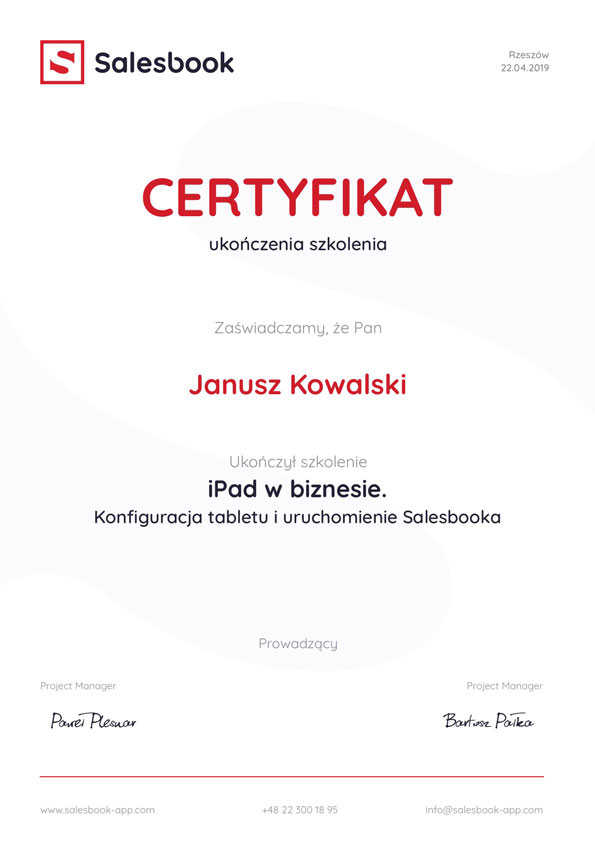

Sales

12 Jun 2023
How do you assess your sales determination and efficiency? And what about targeting decision-maker? If you feel you need additional guidance, learn 5 ways to reach the people who are at the helm and responsible for decision-making in organizations.
Why do salespeople have trouble reaching decision-maker in companies? When they don’t have a direct phone number, they try to ‘cut through’ the secretary’s office in the hope of connecting with the right person.
They also sometimes dial phone numbers for other departments to increase the chance of being redirected to the right department. Fortunately, acquiring new customers doesn’t always have to be done this way.
Did you know that there are 5 ways to increase your chances of reaching a potential customer and ultimate decision-maker?
But before you know these ways and think about preparing an effective sales pitch, find out who to contact in the first place.

Good research in sales work is essential. Before you think of a sales offer, first find out everything you can about the person you plan to reach with it.
After all, your initial assumptions may turn out to be wrong. It is also worth being patient, as the decision-making process on the customer side often drags on.
First of all, find out exactly what the company does, what its competitors are, what your potential customer’s so-called pain points might be.
Determining your target group will ensure that you don’t send sales offers blindly and, therefore, that you don’t associate yourself with a person whose emails regularly clog up someone’s inbox and go unanswered.

The next step is to do a thorough job of discerning the functions within the organization. Think through exactly what the person you want to talk to should be doing and what powers they should have.
See if you can find information on the internet about specific decisions made and actions taken. Make sure who is behind them.
If it’s the head of a department, for example, and you know that introducing your product or service would improve the organization’s workflow or increase sales, you already know what elements of your offering are worth highlighting in the conversation.
Also check social media to see if you know any employees from the decision-maker’s immediate circle. If so, this will increase your chances of making contact.
If you already have some knowledge of the prospective interviewee, read the following points and learn 5 ways to reach the decision-maker.
Let’s assume that you have managed to get the phone number of a key decision-maker to purchase your product or service.
In today’s world you have very little time to focus attention on your company’s sales proposition and get the caller interested in what you want to communicate.

There is a reason why it is said that a satisfied customer is your best advertisement. In sales, it is a well-known claim that a delighted customer will tell 3 friends about your company, while a bitter one will tell twelve people close to them about you.

You can take advantage of this relationship when establishing relationships with clients.
If you feel that the client is satisfied and even willing to share the results of the cooperation in case studies, ask for a recommendation. In return, offer, for example, discounts on additional service elements or other types of bonuses.
Contact through a personal recommendation is more likely to prove more effective. Firstly, you will receive a direct number to the decision-maker.
Secondly, you can already refer to where you got the contact from and say that the person is a customer who already uses your products or services.
This kind of reasoning makes you a more credible conversation partner and your position is already higher than other consultants and consultants at the very beginning.
By doing your research and contacting the decision-maker via LinkedIn, you are more likely to succeed, especially if you are already known in some way in the industry.
It will certainly be easier for you to reach the decision-maker via LinkedIn if your potential clients have the chance to get to know you there as an expert.
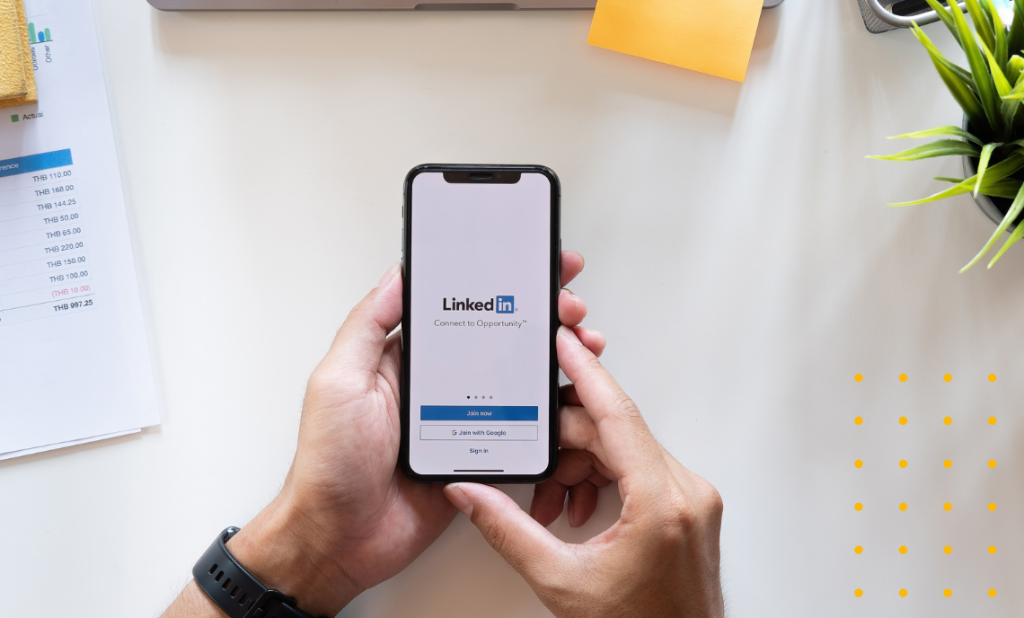
If you regularly expand your network, maintain your image, participate in company webinars as an expert(s), publish substantive posts and articles – you are thus building your personal brand.
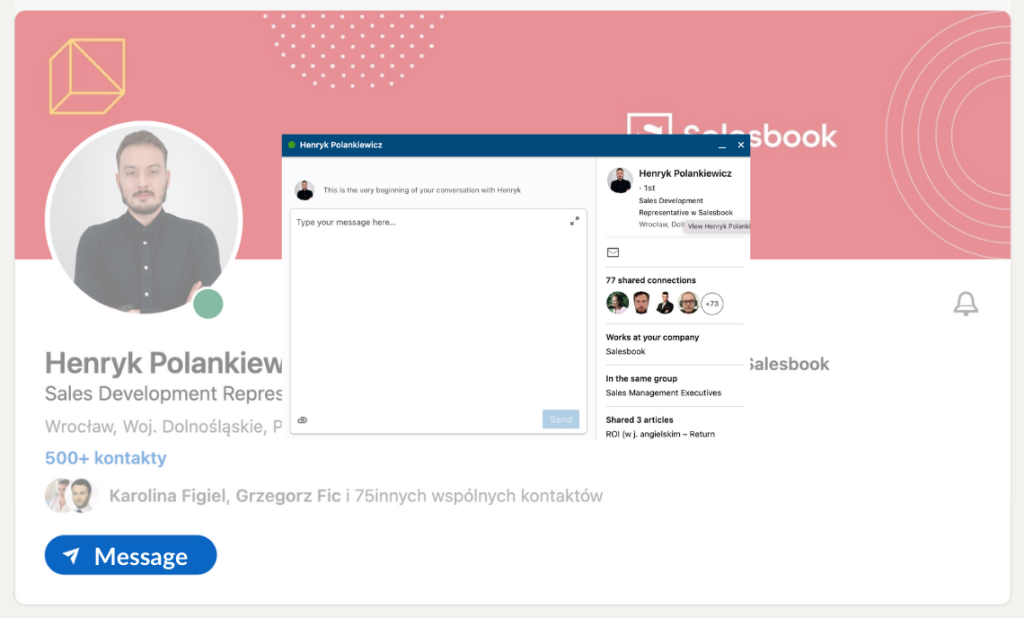
By sending a message via LinkedIn (as opposed to email), you can be sure that the information will definitely reach your potential customer and will not be deleted by an assistant.
A salesman’s job is demanding and customer relationship management is not confined to a rigid timeframe – it is difficult for industry events to be held from 9am to 5pm.
However, getting to know customers at trade fairs, shows, showroom openings and other industry events is one thing. You may get better results by making friends on neutral ground, such as a tennis court, squash practice or climbing wall.

Of course, establishing relationships in this way is an art. It takes a certain aptitude to do it sensitively.
If you are not confident in your skills in this area, the effect of your efforts may be the opposite. Professional networking opportunities are at your fingertips. All you need to do is conduct the right research and plan actions that will increase the chances of success with your future prospects.
You have not been able to contact the head of the department directly, but you may be able to reach a few people around him. Again – check your network of contacts on LinkedIn and the company’s organizational structure. Think through where to start and who is worth reaching out to.
You may find that you have already met someone on your career path who will be able to help you get there.
Then get in touch with a person, such as a sales manager, who you think might have a goal that your product or service achieves. Build a good argument and convince the sales manager that convincing his/her boss, him/her too, will pay off.
This is the time to talk about the prospect’s pain points, advantages of your solution and prepare a professional template for the sales offer you will be sending out to get the final purchase.

Let’s assume that you have successfully reached a decision-maker and the next step is to prepare a personalized commercial offer.
Before you start sending emails, ask yourself whether your sales offer is really effective. Does what you have been sending to the potential customer so far show your competitive advantage? Are you sure you have understood the customer’s needs?
Every sales offer is an invitation to do business with you and a business card for your company.
However, do you know how to write a commercial offer that help you to close sales, contains the necessary information and stands out at the same time?

This is the moment to also take a critical look at the advertising material and product catalogue that your customers have seen so far.
Do you know what qualities a sales pitch should have in order to be relevant to today’s reality, when, according to various studies, we read only 20% of the text on a website?
Many salespeople ask themselves the same question: ‘How do I write a commercial offer that is effective’? And in such a way that the decision maker wants to see it at all?
Certainly, a good commercial offer should contain such basic information as, among other things, a headline, a description of the product range, the purchase price or payment terms.
Elements such as direct address to the addressee or the expiry date of the commercial offer should not be forgotten either.

However, much more is needed to prepare a good commercial offer template. The magazine Sprawny Marketing analyzed trade offers in 2021, drawing some interesting conclusions.
Here is what we learn about trade offers from Marcin Zaborowski’s article:
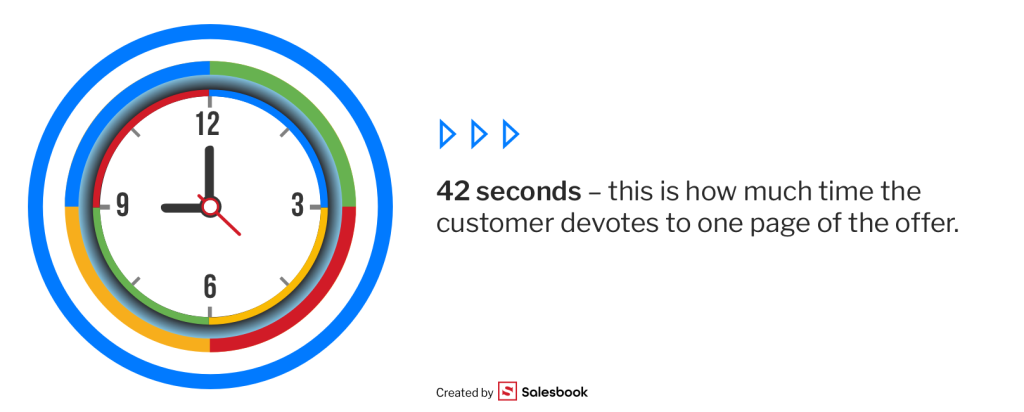
To a large extent, you already know how to reach your customers. You are also aware that the customer, when looking at your sales offer, should know that you have understood their problem and can help them.
A commercial offer should be written in plain language. The customer must have no problems understanding the content. Also use industry-specific phrases that your potential customers uses. This will give him a sense that you know what you are talking about.
Be able to justify the choice of services or products that you have and how they solve the customer’s problems.
Your commercial offer includes a price and you clearly show what it is based on. This is very important information for the customer.

Refer to facts, figures, concrete calculations, show in a simple way what concretely will give the customer to take advantage of your commercial offer.
Let the recipient feel that you have actually listened to what they have been saying and can offer them a viable solution to their problems and achieve their goal.
It would seem that creating this kind of document is not a difficult job – after all, working as a salesperson, you know the products and services of the company you work for.
Despite this, commercial offer templates are often full of mistakes and do not stand out.

Theory is theory, but how do you reconcile all these demands and at the same time find time for everything?
The solution may turn out to be a tool that takes a comprehensive approach to the salesman’s work – assisting in the administrative part. Same as CRM (an acronym for Customer Relationship Management), but also in the typical sales part, responsible for the presentation of the offer.
One such tool is Salesbook, which assists the salesperson throughout the sales process, including during contact with the customer, the presentation of the company and the offer.

Let’s start by saying that by using a CRM from Salesbook, you can plan all your customer communication – the frequency of emails sent, follow-ups, calls made or meetings scheduled.
In short, the CRM will ensure that you are always up to date with what your customers are hearing.
Salesbook also has a Reference Customers module, which will help you collect recommendations from satisfied contractors. This will come in handy for you to use referrals and reach key decision makers faster.
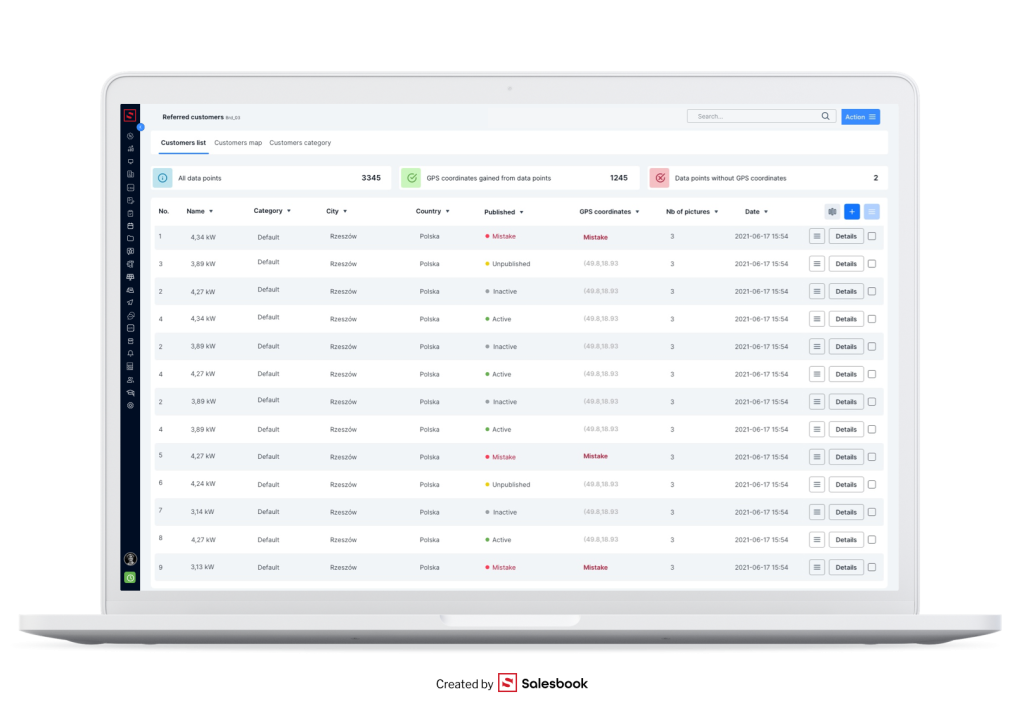
Thanks to this module, the salesman has immediate access to, among other things, similar realizations, key customers from the same industry, a map with investment locations. This means that he also has the most important sales arguments at hand during the meeting.
In addition, Salesbook CRM analyses both qualitative and quantitative data on salespeople’s work. This means that you can create an effective call script based on this and simply apply it to your daily work.
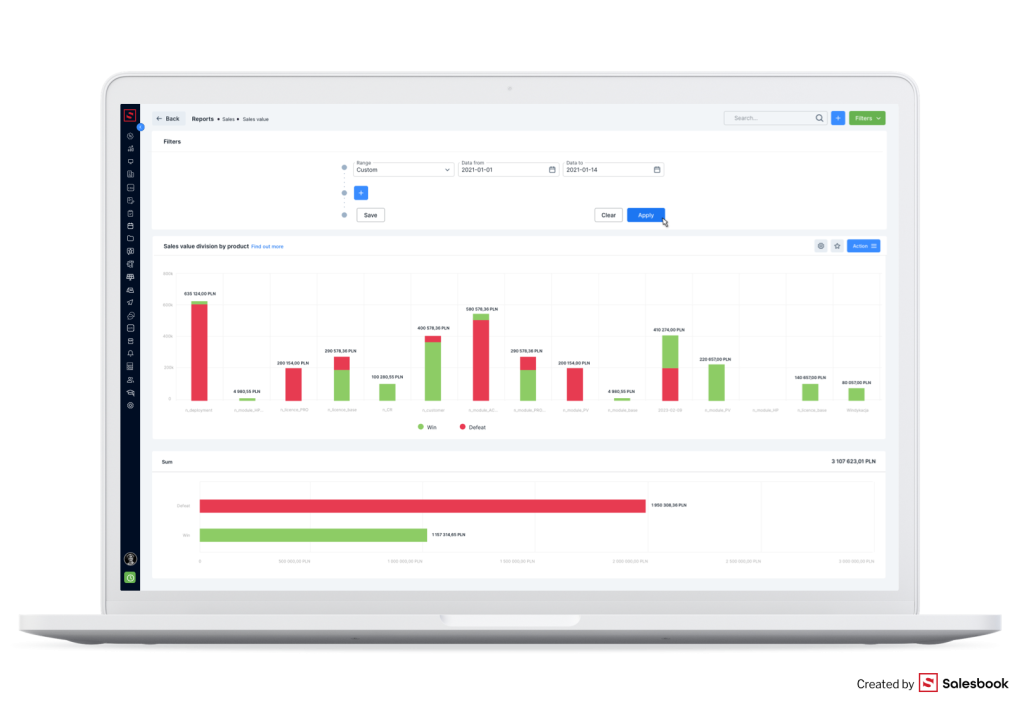
Your client (the decision-maker, which is most likely to be a director or department manager) has a finite amount of time for meetings and there is usually not enough of it.
When presenting a service or product to such a busy and busy person, you must take this into account.
Your offer needs to grab attention right from the start and stand out from the get-go. This is why Salesbook provides salespeople with a tablet app that they can use during the meeting.
Firstly, the salesperson can use the app to present the company to customers. This is a huge difference compared to competitors who use paper advertising catalogues.
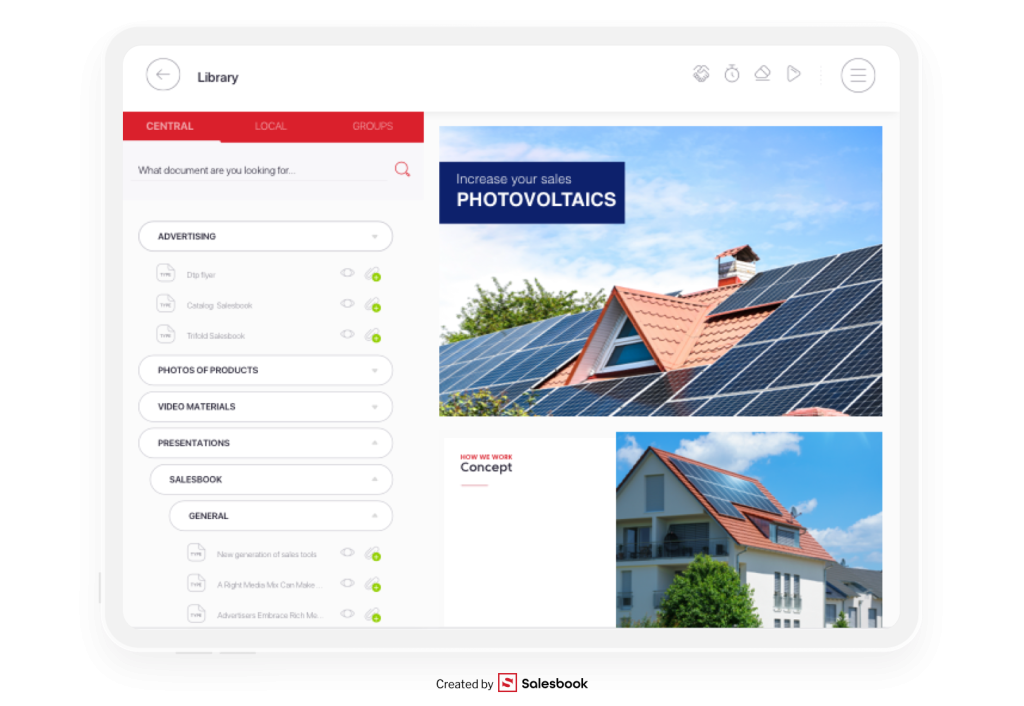
The salesperson can talk about her company’s biggest and best-known projects, show videos, photographs or mock-ups of projects yet to be planned. Words supported by concrete examples and images are more likely to appeal to the audience.
Secondly, Salesbook is an excellent tool that allows you to take a closer look at your customers’ needs and analyze them thoroughly.
This is all thanks to the needs calculator, which the salesperson uses in a meeting to find out the expectations of his or her counterpart and then present the appropriate products or services.
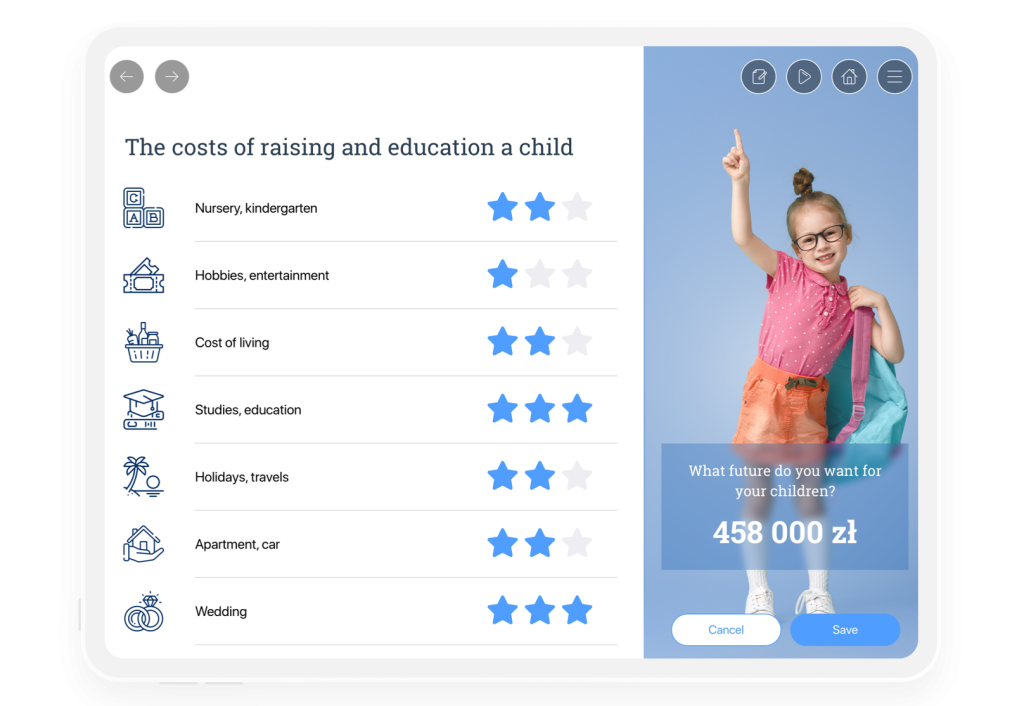
When the salesperson talks to the customer and ticks the relevant boxes, all the information is automatically fed into the system.
With just a few clicks, the salesperson generates an automatic offer and sends it (or even several variations of it) to the customer’s e-mail.
When the client opens the e-mail, the salesperson receives a notification of this. So, he or she does not have to unnecessarily telephone the caller. Follow-ups after meetings are also sent automatically by the salesman, without wasting time on manually writing summaries.

According to our findings, Salesbook streamlines the work of salespeople, increasing their efficiency by more than 50%. When other salespeople are wasting time on repetitive tasks, Salesbook enables your sales force to focus more on key customers. So, it makes it easier to reach decision makers.
If you want to see how Salesbook works in practice, sign up for a free demo. Learn how to win the hearts of every decision-maker.


Any questions? Feel free to contact us.
+44 203 807 0179
Our Customer Success Team is available from Mon. to Fri. 9am - 5pm CET.
We support inquiries, processes of configuration and use of Salesbook app, as well as billing and technical issues.
